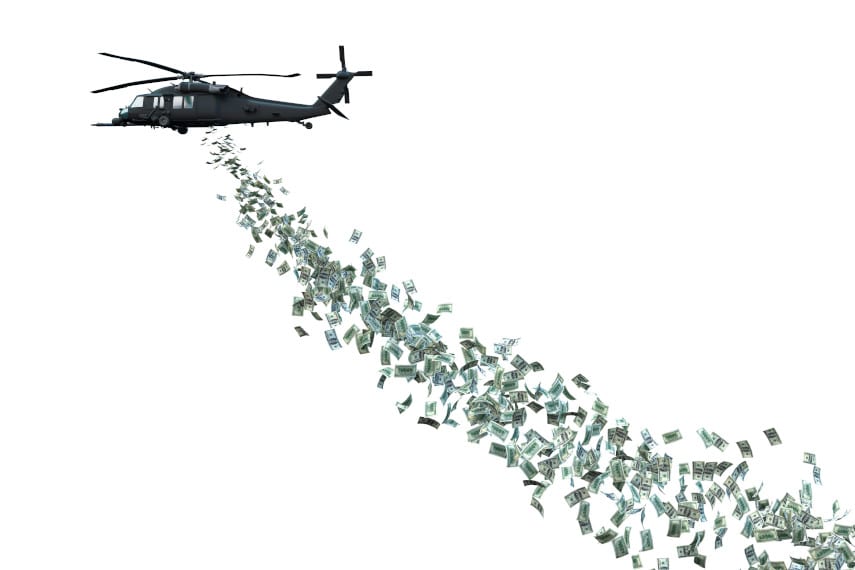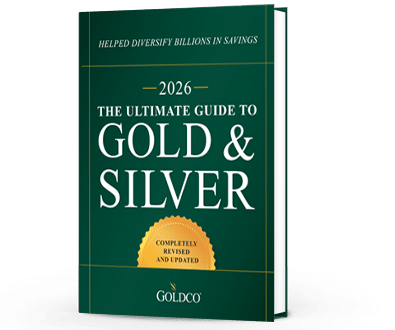6 Indicators of a Potential Recession
It seems that in the media today there are more and more mentions of the dreaded R-word: recession With growing economic uncertainty, the threat of potential recession seems to be growing as...
Economy

With fears of high inflation continuing to mount, the Federal Open Market Committee (FOMC) decided to throw caution to the wind, maintaining its accommodative stance of monetary policy. The Federal Reserve will continue to purchase Treasury securities and mortgage-backed securities to the tune of nearly $1.5 trillion per year. So the decision on when to begin tapering asset purchases, if at all, will get pushed off for at least a few more weeks.
Despite the warnings that inflation is rising out of control, the Fed continues to maintain that it is not a problem, and that it is merely transitory. It continues to subsidize the mortgage market and the stock market with its asset purchases, further inflating the bubbles we’re seeing right now. And if the Fed gets it wrong, which it may very well, it could have disastrous effects on the health and strength of the economy.
That being said, there are four primary factors the Fed is looking at when it makes its decision to taper. It’s anyone’s guess when that might happen, but these four factors are also good proxies for determining the strength of the economy.
Fears of a resurgence of COVID are beginning to dominate headlines. Despite the fact that case numbers are still far lower today than they were at the peak of COVID’s run, the Centers for Disease Control (CDC) and other health authorities are starting to urge a return to mask wearing. That has many on both Wall Street and Main Street fearing that we’re going to see a return of the harmful lockdowns that decimated the economy last year, lockdowns whose negative effects remain ongoing today.
Presumably, a return to lockdowns might result in more Fed monetary easing and greater amounts of asset purchases. And a decrease in COVID cases might convince the Fed that there won’t be a further threat from COVID, and thus might strengthen the case for tapering or ending its asset purchases.
There are still millions of Americans out of work, putting pressure on businesses who have trouble finding people to fill jobs. Generous federal unemployment benefits are taking the blame for much of that, but the extensions to that aid are scheduled to run out in the first week of September.
With Congress soon to take its August recess, there isn’t much time to put together a plan to extend those unemployment benefits further, thus they may very well run out. If they are allowed to run out, will that provide the incentive for the unemployed sitting on the sidelines to finally return to the workforce? Or will they continue to sit things out?
And if the benefits are extended again, will that continue to incentivize staying out of the workforce, keeping the unemployment rate elevated? These are all questions that will factor in to the Fed’s decision on whether or not to taper.
Inflation is probably the top issue confronting the Fed right now. But if you read the latest FOMC statement, you could be forgiven for thinking that the Fed doesn’t consider inflation to be that big of a deal.
For the Fed’s policymakers, many of whom make hundreds of thousands of dollars a year, the cost of chuck roast rising from $3.99 a pound to $5.99 a pound doesn’t make that big a difference. But to a family of four surviving paycheck to paycheck, price increases like that on many of their food goods could make a huge difference to their monthly budget.
Inflation expectations are beginning to increase too, as frustrated consumers are seeing their cost of living increasing right before their very eyes. And the higher those expectations get, the more worried the Fed becomes.
Right now the Fed is betting the farm on inflation being transitory. But if inflation remains high or continues to pick up, not only will the Fed be in a real bind with respect to the policy decisions it makes, it will also have lost the trust and confidence of Wall Street and financial markets.
No longer will markets place their blind trust in the Fed to do the right thing. Such a major blunder would seriously erode confidence in the Fed, which could mean that anything the Fed does to combat inflation in the future could end up being ineffective, as markets won’t trust that the Fed’s actions will help.
When the Fed says it is paying attention to financial developments, that’s code for saying it wants to continue to backstop stock markets. If stock markets start to drop significantly, expect the Fed to abandon all discussion of tapering and jump in to support markets.
When it comes to international developments, the Fed is undoubtedly looking at what other central banks are doing, such as the European Central Bank which just announced that it would maintain persistently accommodative monetary policy. It is also looking at COVID-related developments in other countries, particularly new lockdowns. Any sign that the negative effects of new lockdowns might have a contagious effect on US markets would likely cause the Fed to step in again with new monetary easing.
No matter which way the Fed goes, the future of the gold price is looking pretty strong. If the Fed does decide to taper, it would be because inflation is beginning to spiral out of control. That would indicate trouble for the economy, which would incentivize many more people to flock to gold.
Gold has been a safe haven for centuries for those looking to protect their assets against inflation. It holds its value and purchasing power against inflation over the long term, and can provide significant asset appreciation during times of high inflation. During the 1970s, for instance, gold’s average annual growth rate was over 30%, well higher than inflation that peaked at 11%.
If the Fed decides not to taper, and instead continues with its current monetary policy or even ramps up its asset purchases, that too could provide a boost to gold. That would be an indicator that the economy is weakening, which once again would cause many investors to flock to gold as a safe haven asset.
The reality of the situation today is that the economy just isn’t in great shape. The headwinds that were weighing on it before COVID, such as massive indebtedness, remain. And with millions of Americans still out of work, fear of lockdowns, and rising inflation, signs of a return to solid economic growth just aren’t there.
If you have savings that you want to protect, maybe it’s time to start thinking about doing so. With a gold IRA, you can invest in physical gold while still enjoying the same tax advantages as a conventional IRA. That makes a gold IRA a very convenient investment vehicle for those with existing tax-advantaged retirement savings who want to invest in gold.
You can even fund a gold IRA by rolling over or transferring assets from your existing retirement accounts, such as a 401(k), 403(b), TSP, IRA, or similar retirement plan. That allows you to lock in any gains you have already made in your current account and then benefit from gold’s future price growth.
But timing could be critical. Don’t wait until markets collapse before you decide to make the move to protect your assets. Call the precious metals experts at Goldco today to learn more about how you can protect your hard-earned savings with gold.

